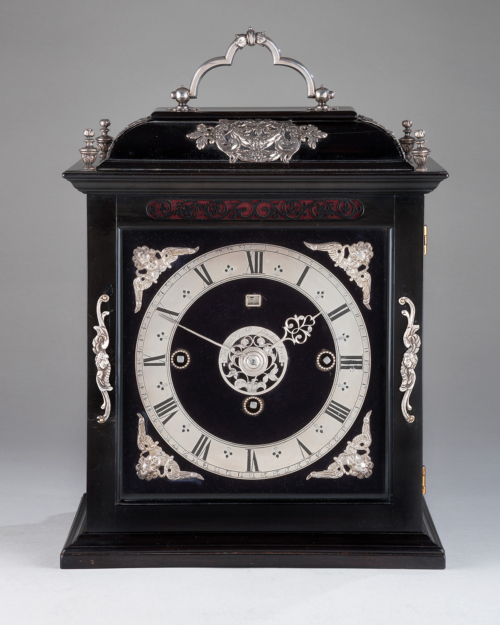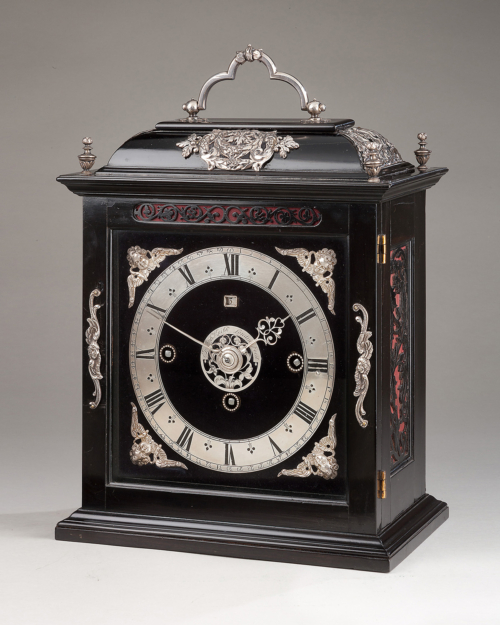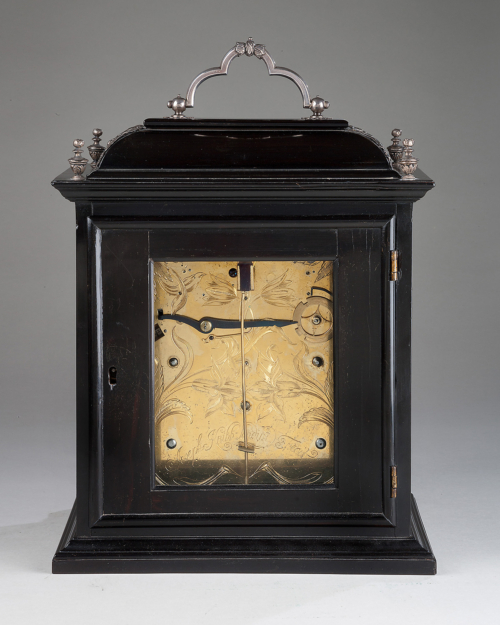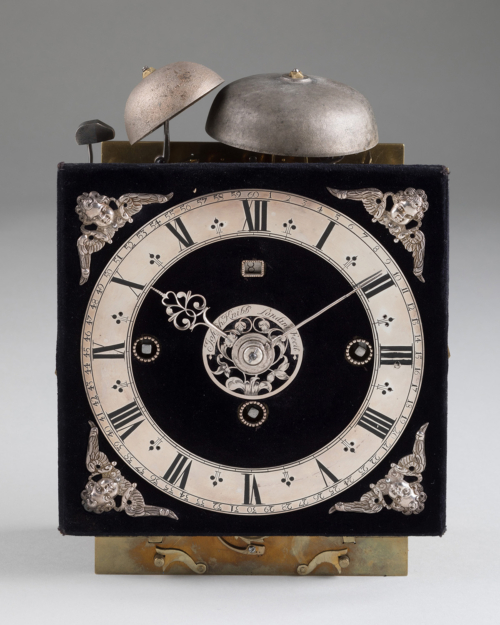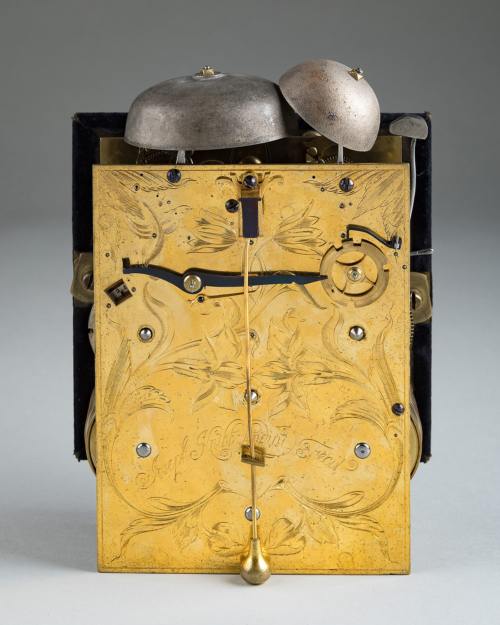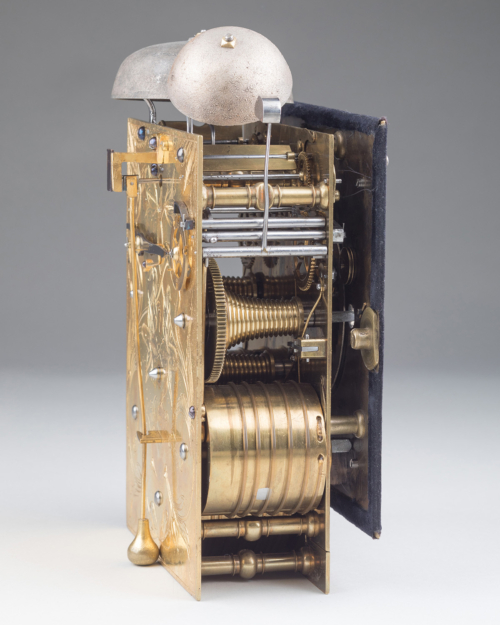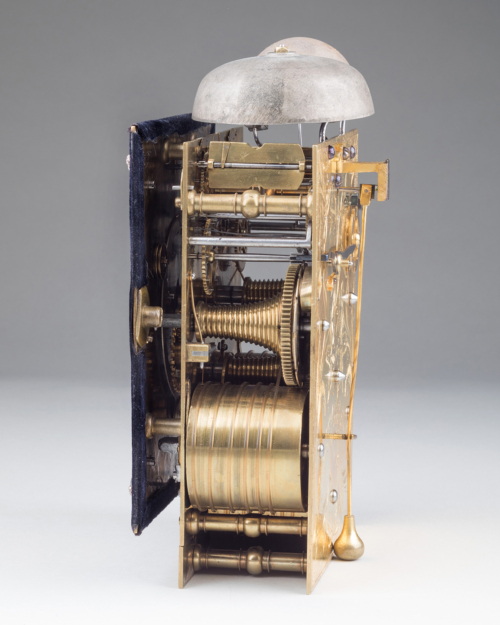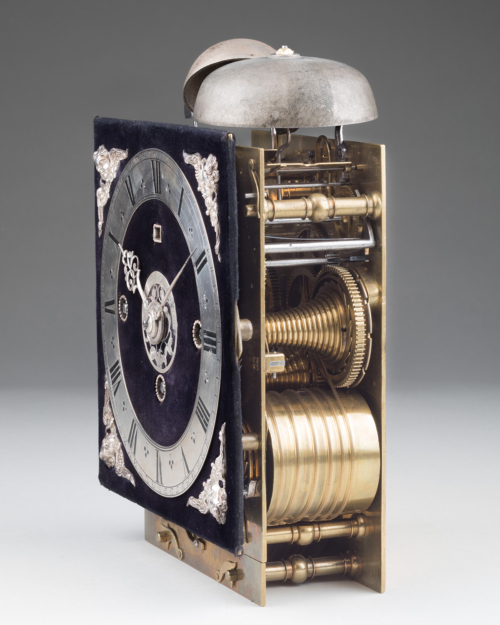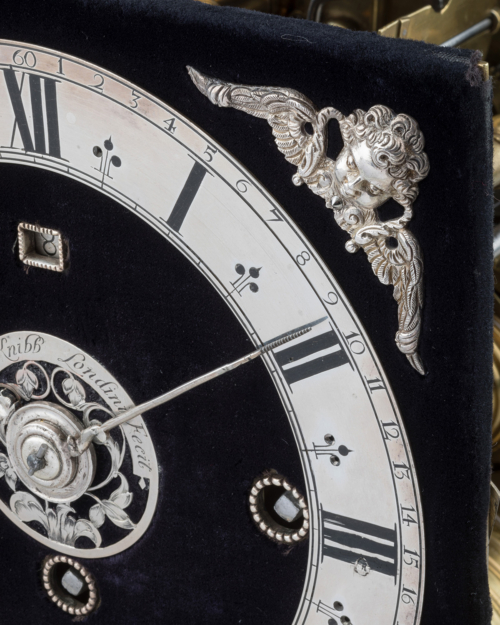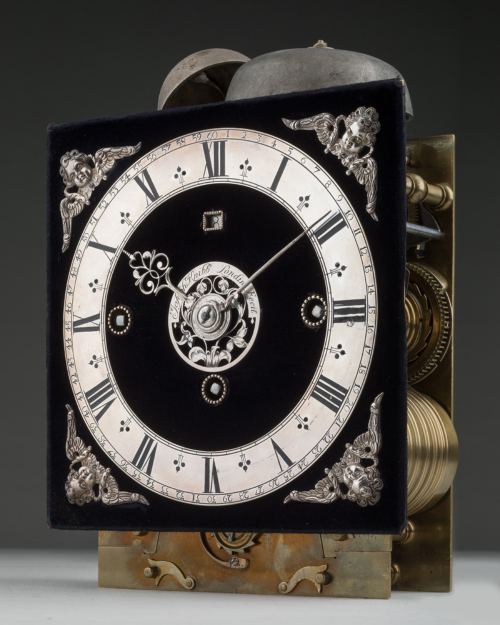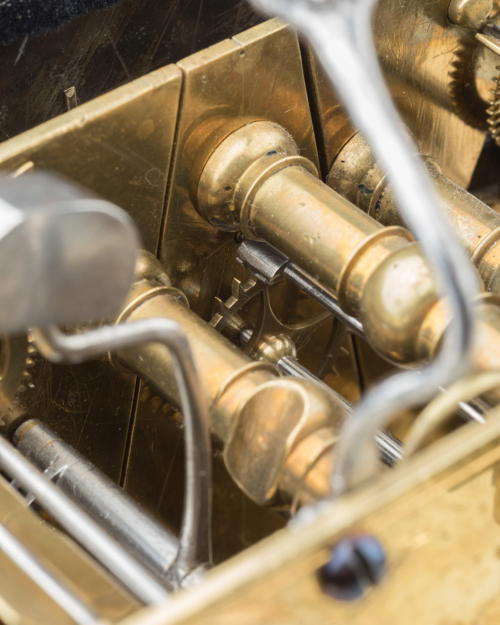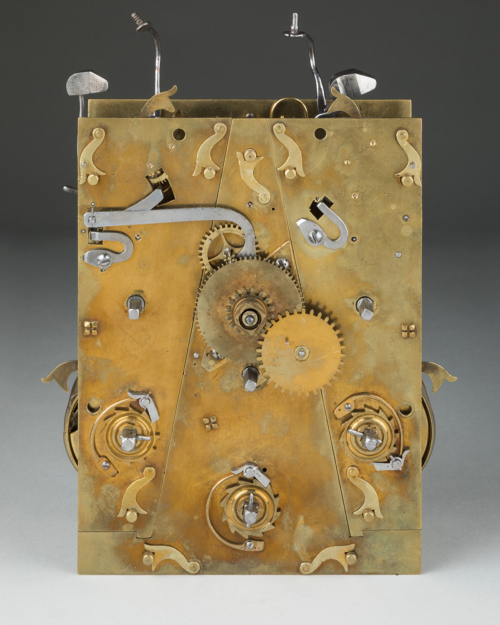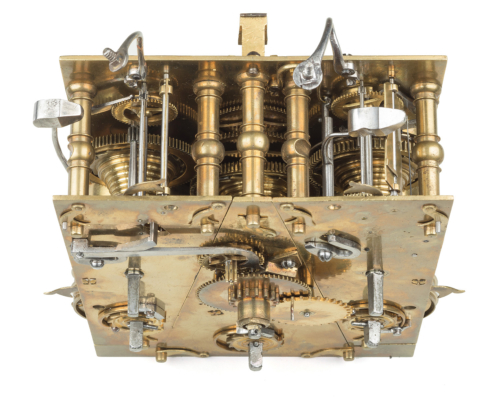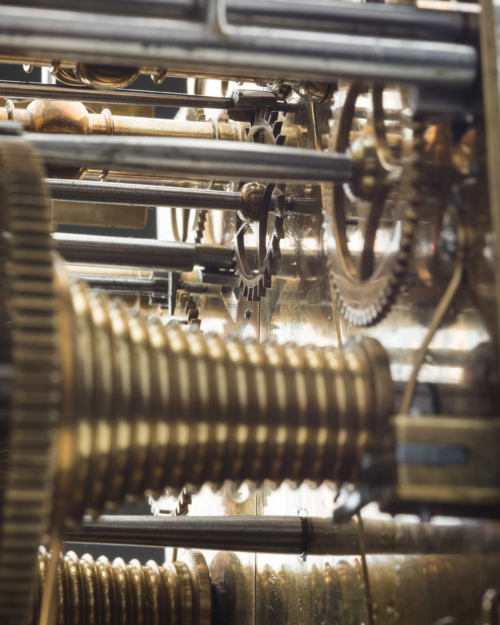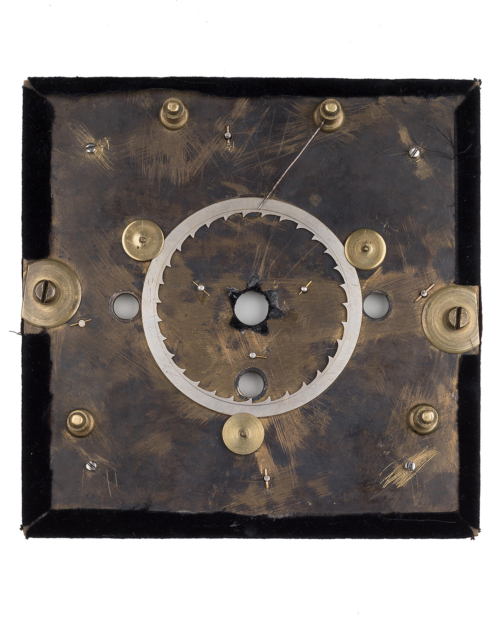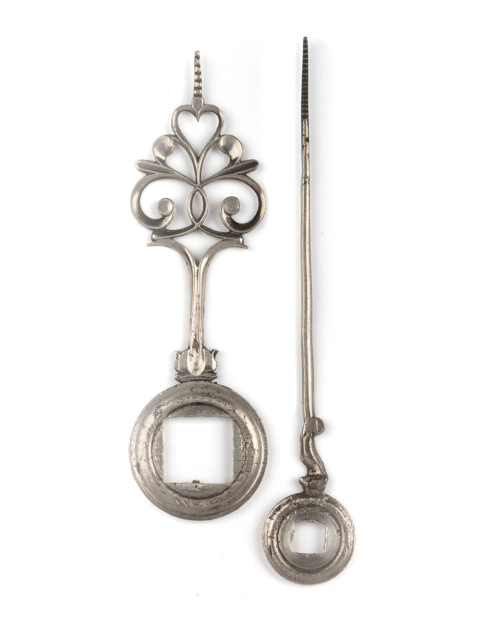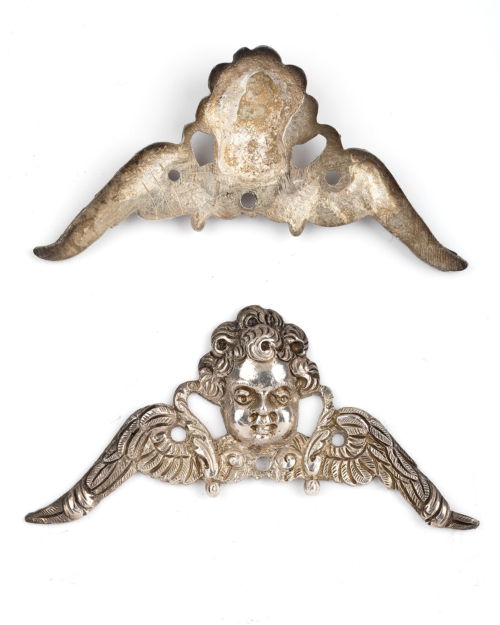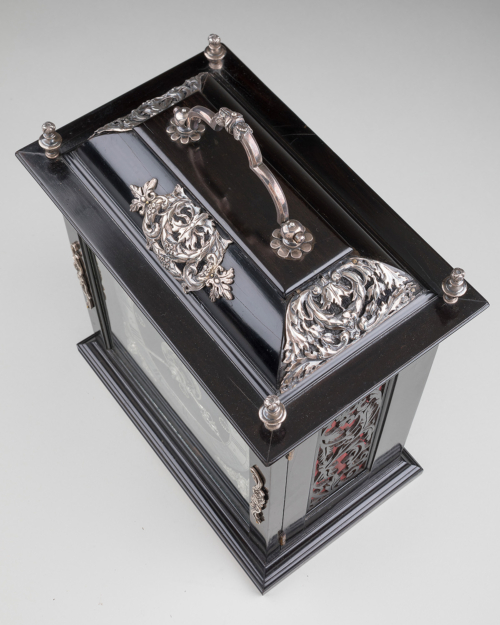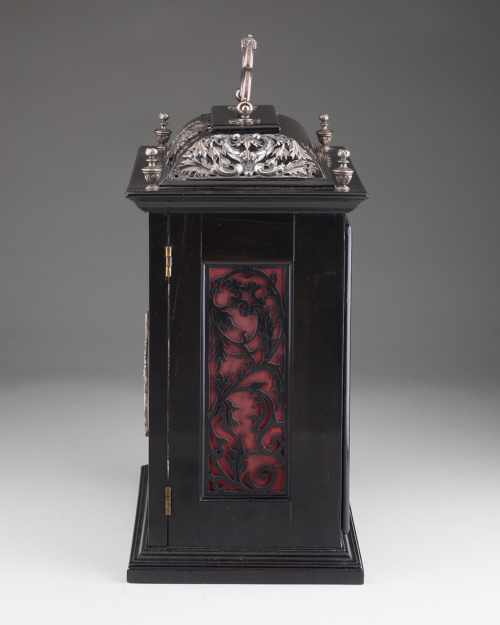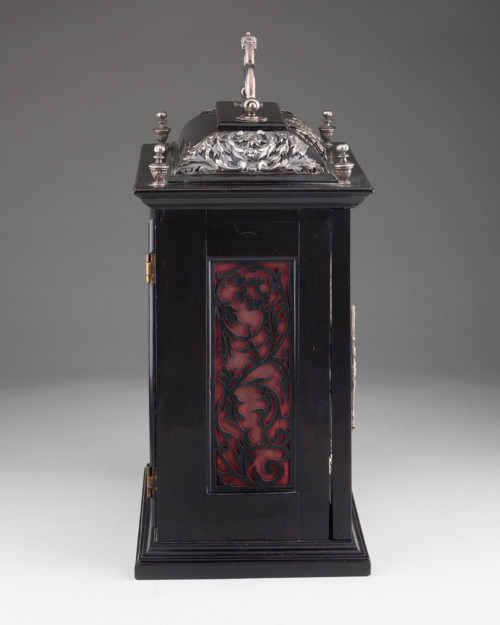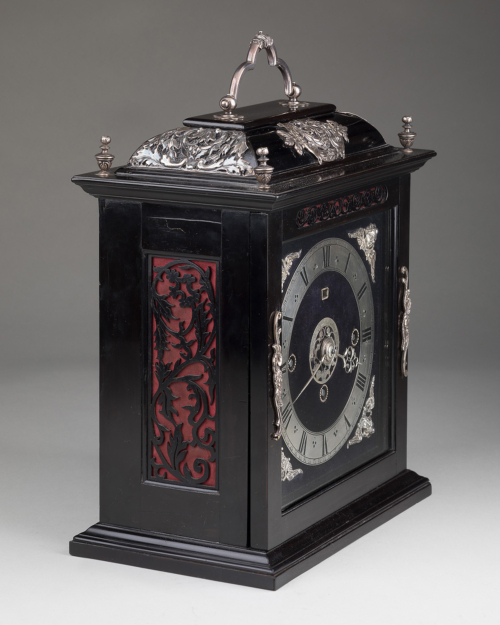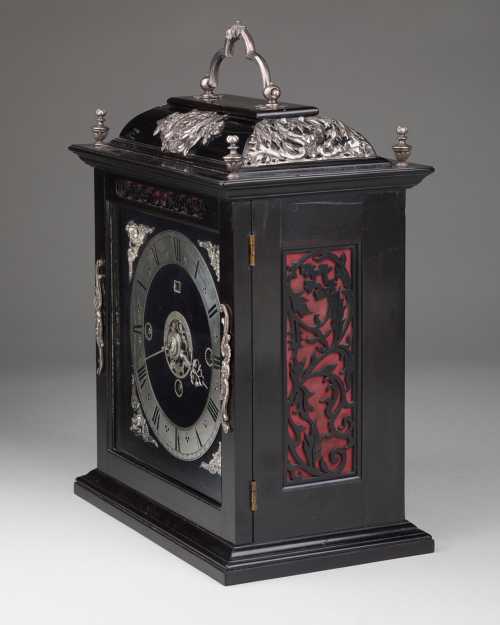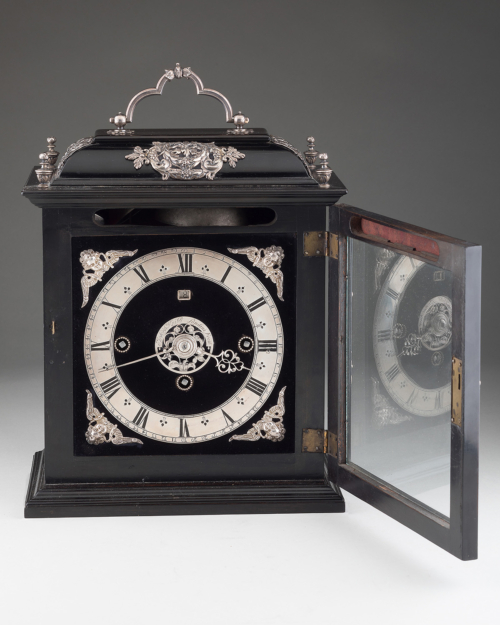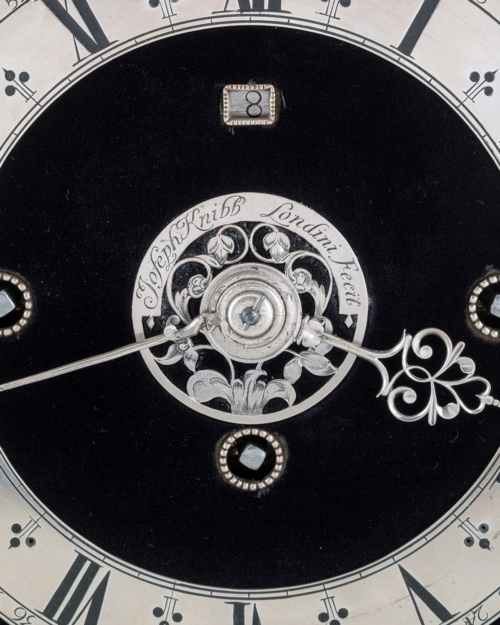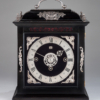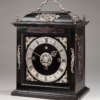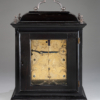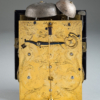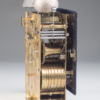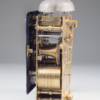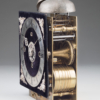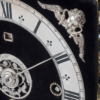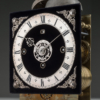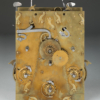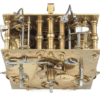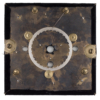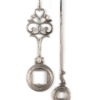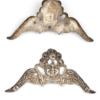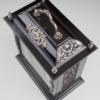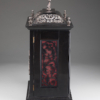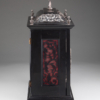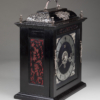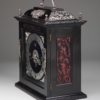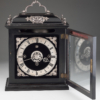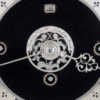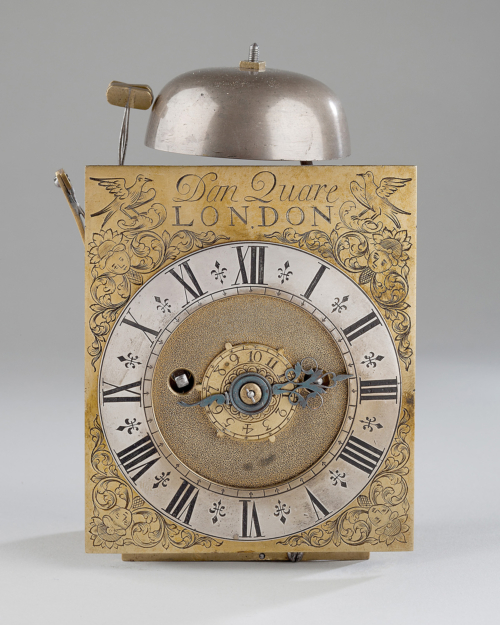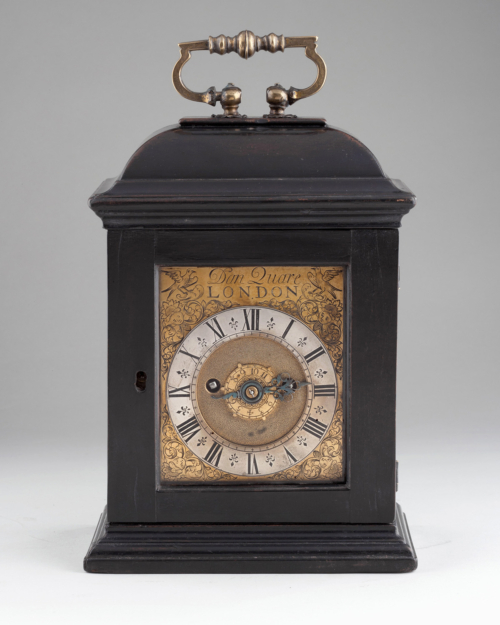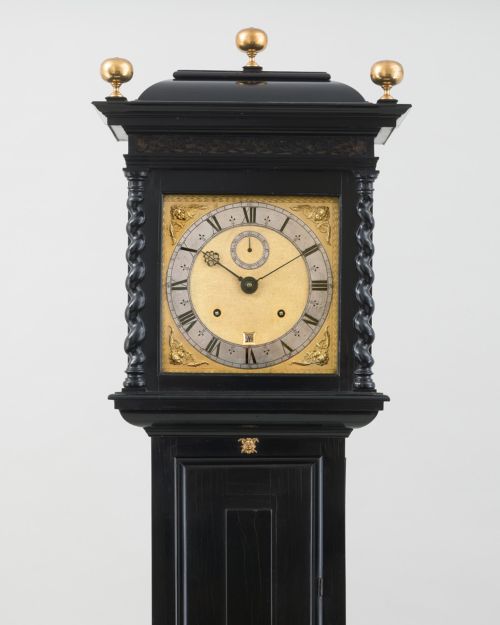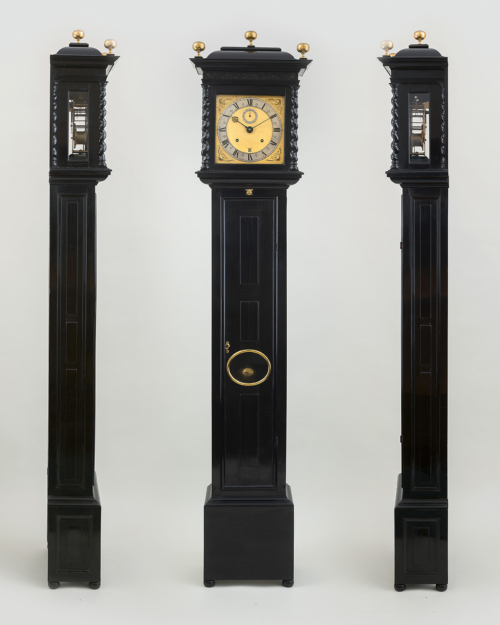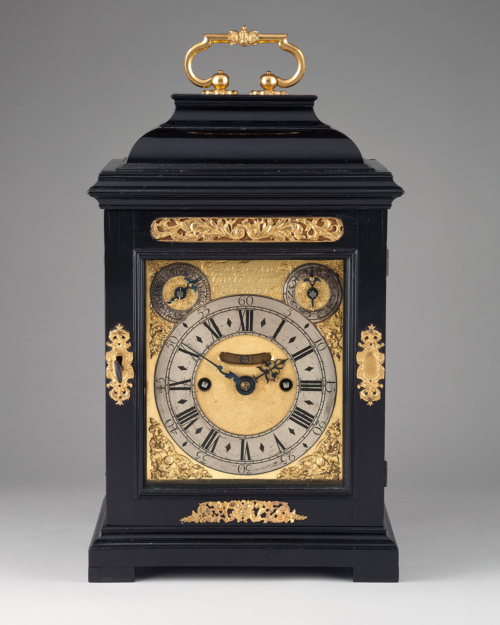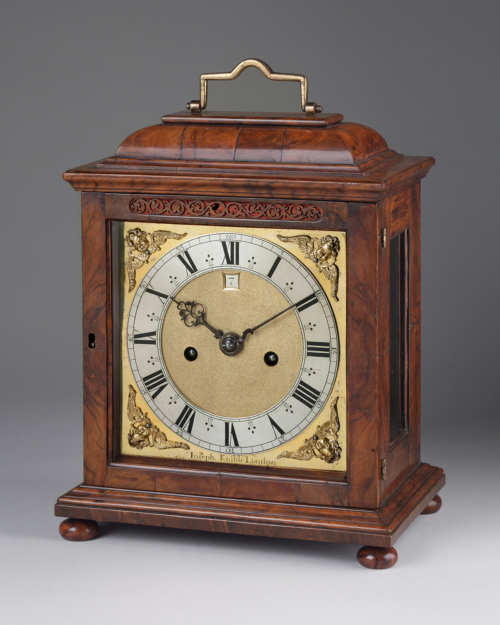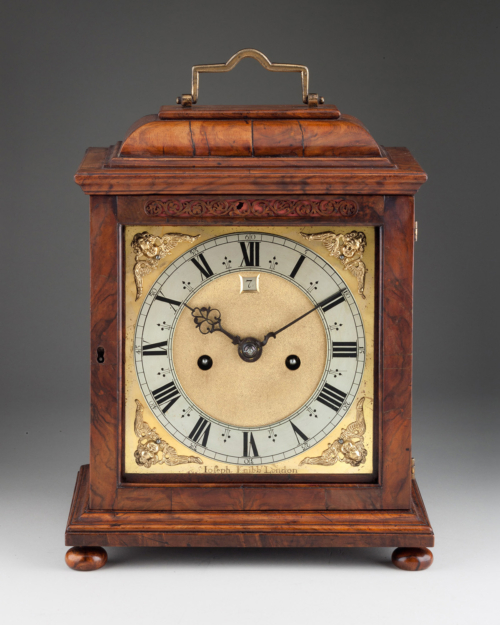| Stock No. | Exhibit No.10 |
| Height | 11½ inches |
| Case | The Phase II case, ebony-veneered onto an oak carcass, is surmounted by a silver trefoil foliate tied handle with leaf base plates above the cushion moulded top with fine quality silver foliate repoussé mounts to the sides and front, the cushion top flanked by four later silver urn finials. The front door with cast silver cherub and scroll escutcheons; the left escutcheon swivelling to one side to reveal the door lock. The top rail inset with a pierced ebony sound fret with further pierced sound frets to the side apertures. |
| Dial | The 6⅞ inch square brass dial with four latched dial feet, covered in black silk velvet and applied with a solid silver chapter ring with Roman hours and trident half hour markers, fully calibrated Arabic minutes 1-60, with four early pattern finely-chased silver winged-cherub spandrels to the corners, the centre with pierced central silver roundel, engraved with foliage and signed in Latin Joseph Knibb Londini fecit. The winding holes with silver beaded collars and a silver beaded date square below XII. The well-sculpted silver hands with a contrasting blued-steel tip to the minute hand. Attaching to the case with Knibb’s typical dial turns behind III and IX. |
| Movement | The 5¾ by 7¾ inch plates, triple-divided to the front with latches to the nine typical baluster pillars, triple fusees and spring barrels with gut lines, tic-tac escapement with bob pendulum. The hour and quarter strike trains governed by two engraved countwheels, the hour internal with a viewing aperture, linked by a trip lever and the quarter countwheel mounted to the backplate, the hours striking on a large bell with the quarters sounded on a smaller bell. The gilded backplate is symmetrically engraved with tulips and scrolling foliage and signed in an arc to the centre Joseph Knibb Londini Fecit. The movement is secured to the case by means of turnscrews at the back of the dial. With fire-gilding to the backplate, backcock and pendulum bob. As Knibb’s career progressed, his backplate engraving developed and he ceased to sign his clocks in Latin. The Symonds Knibb (listed below, and on p.132 of the catalogue) is also Grande Sonnerie and has a gilded backplate with Latin signature. However, the top corners seen here retain early leaf patterns also found on his earlier clocks (as the Phase I example, Exhibit no.9), possibly suggesting that this example is also a contender for being the next in his Phase II series, after the 1677 Daniels Knibb (see the king’s commissions below). |
| Provenance | Sotheby’s London, 16 October 1972, lot 46; Private collection UK, until bought by Anthony Woodburn for: The Hamburg Collection; Private collection UK. |
| Comparative Literature | RA Lee, The Knibb Family Clockmakers, 1964; Dawson, Drover & Parkes, Early English Clocks, 1982; Horological Masterworks, AHS, 2003; Exceptional English Clockwork, Private 2015. |
| Dimensions | Height 11½ inches; width: 9¾ inches; depth: 6 inches |
| Notes | The King’s Commissions of 1677 It is interesting that, concurrent with the production of Knibb’s first Phase II ebony, silver and velvet clock, Tompion was also making his first commission for Charles II, which was referred to by Robert Hooke in his diary entry of 24th June 1677, as the Kings striking clock with swash teeth. The only contender to fulfil Hooke’s description is Tompion’s first two-train Grande Sonnerie clock, The Silver Tompion (see Exhibit no.2, p.18 of the catalogue), which is also presented in ebony and silver with a silk-covered dial. That there was an element of competition between these two up-and-coming makers during 1677 is unsurprising; they were becoming celebrated in the circles that mattered and while both had already made important scientific commissions, prior to this Tompion had not actually secured a commission directly for the king. As Knibb went on to produce this now celebrated series of Phase II clocks, we tend to associate this sort of dial application in London with him. However, Tompion had presented his two Greenwich regulator dials in a similar manner in c.1676, but unlike Knibb, the Silver Tompion was the first and last time that Tompion presented a domestic clock in this way. It seems significant that both Tompion and Knibb would present their royal commissions of 1677 in the same manner, and this appears to inextricably tie the two clocks together. However, it was usual practice for the customer to specify finish and so it appears the king competitively ordered the same, but allowed the makers to decide their own clock’s complexity. There is no doubt that the king’s approval did much to enhance reputation and influence patronage from elsewhere, and one has to conclude that Tompion’s Grande Sonnerie striking and repeating clock won out over Knibb’s Roman notation example. Yet it may not have ended there; Knibb’s two following Phase II clocks (the Symonds and Hamburg Knibbs, listed on p.132 of the catalogue) share the same Grande Sonnerie strike and finish with the Silver Tompion and, if one accepts the rivalry process but takes it one step further, it is possible that one or both of these Phase II examples might actually have been made in response, to equal Tompion’s clock, as a subsequent reputational answer by Joseph Knibb for Charles II. Joseph Knibb Phase II clocks Phase II are distinguished by their velvet dials and silver mounts and were first categorised by RA Lee in 1964 in his book The Knibb Family Clockmakers. They are considered to be amongst the most aesthetically pleasing 17th Century table clocks ever produced. To date only nine examples are recorded. Four of these (2, 3, 5 & 7) have complicated three-train movements and five (1, 4, 6, 8 & 9) are simpler two train examples. The Hamburg Knibb is one of only three examples made in 1670s; these are distinguished by their tic-tac escapements and expensive fire-gilding to their backplates, a practice that Knibb had generally dispensed with by c.1680. The second and third clocks are more complex Grande Sonnerie striking, and only these two examples incorporate Knibb’s early trefoil handle to their cases, as seen here. The Joseph Knibb Phase II silver-mounted clocks in tentative date order, from 1677 to c.1685:
|
- Sorry, this product cannot be purchased.
The Hamburg Knibb, circa 1678-79
A very rare and important Charles II ebony-veneered and silver-mounted Phase II Grande Sonnerie table clock with tic-tac escapement by Joseph Knibb, London.
£650,000
Additional information
| Dimensions | 5827373 cm |
|---|

